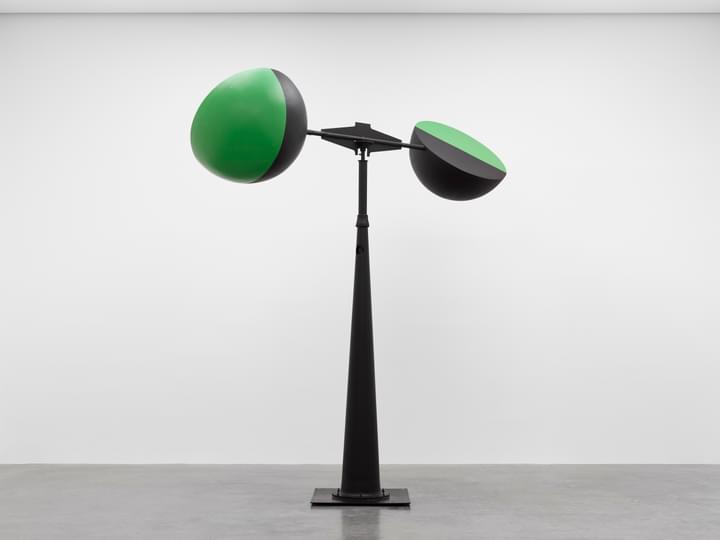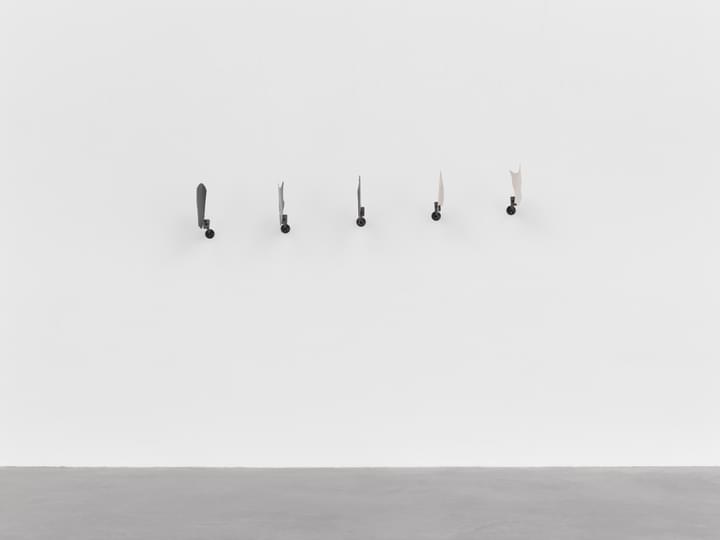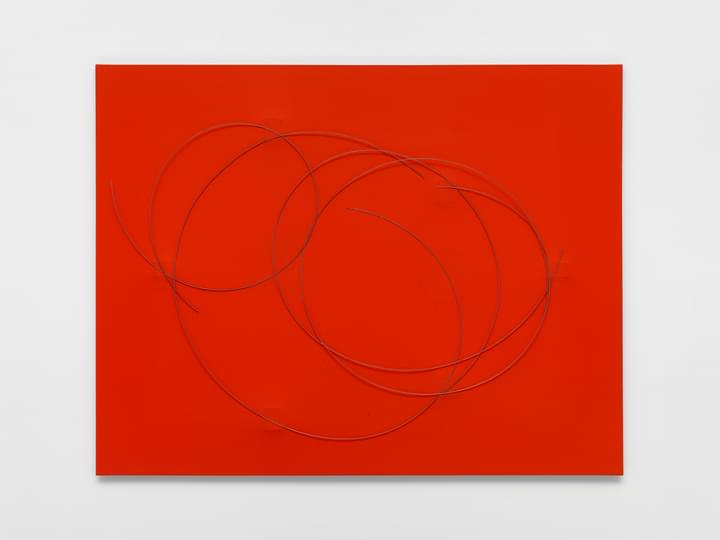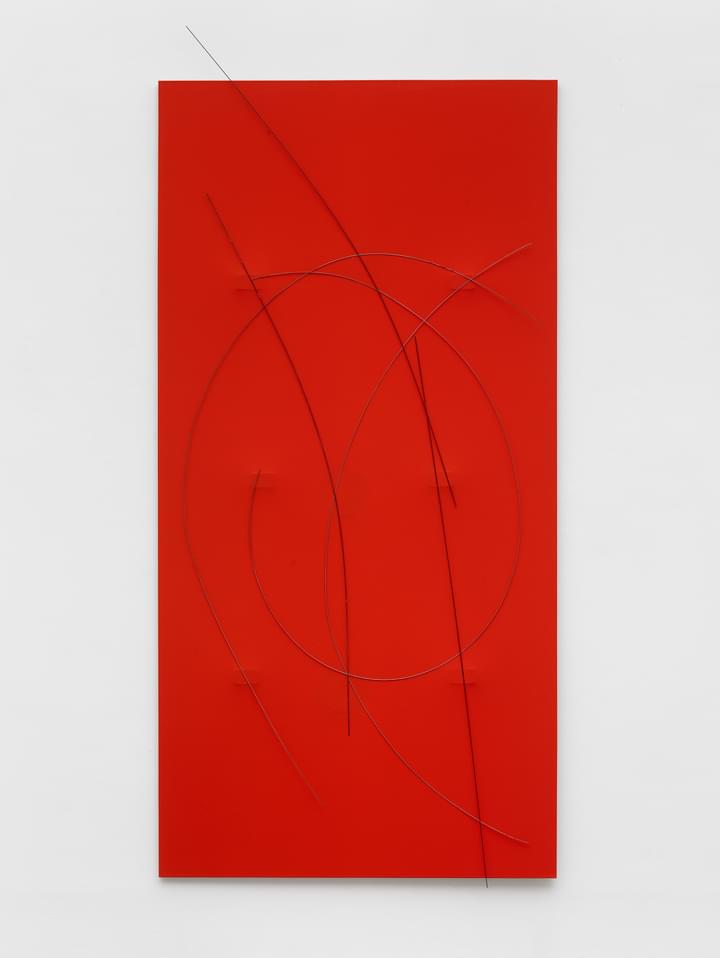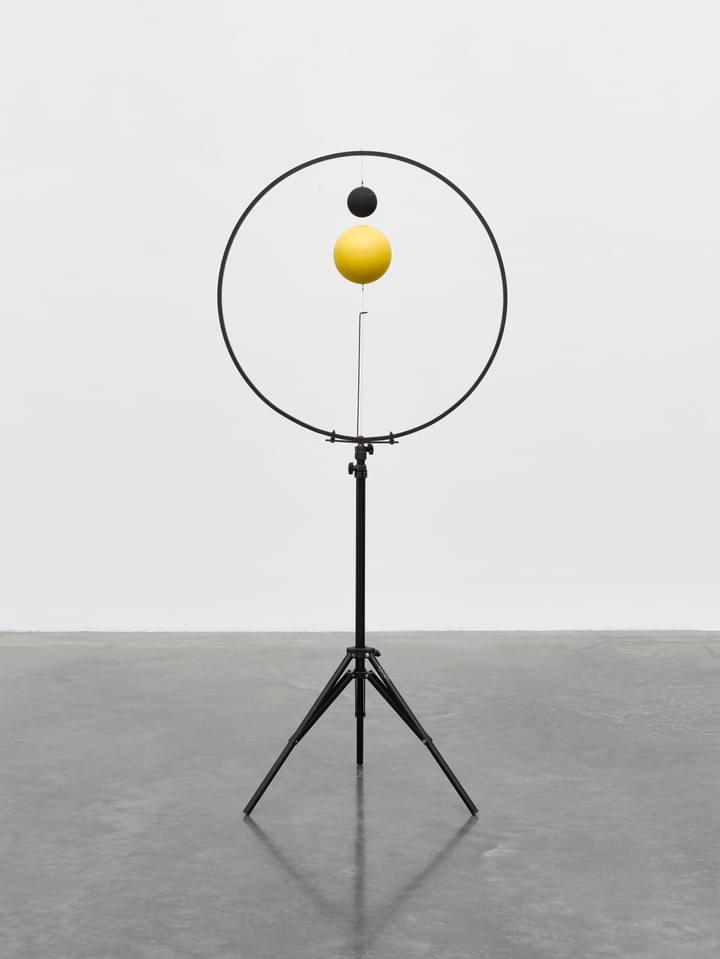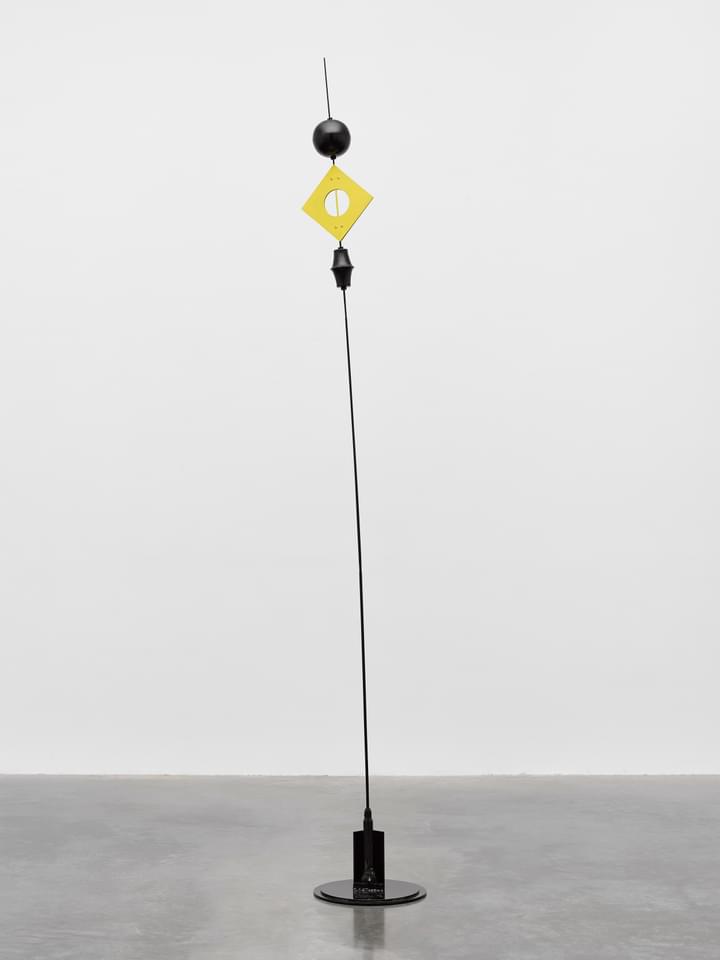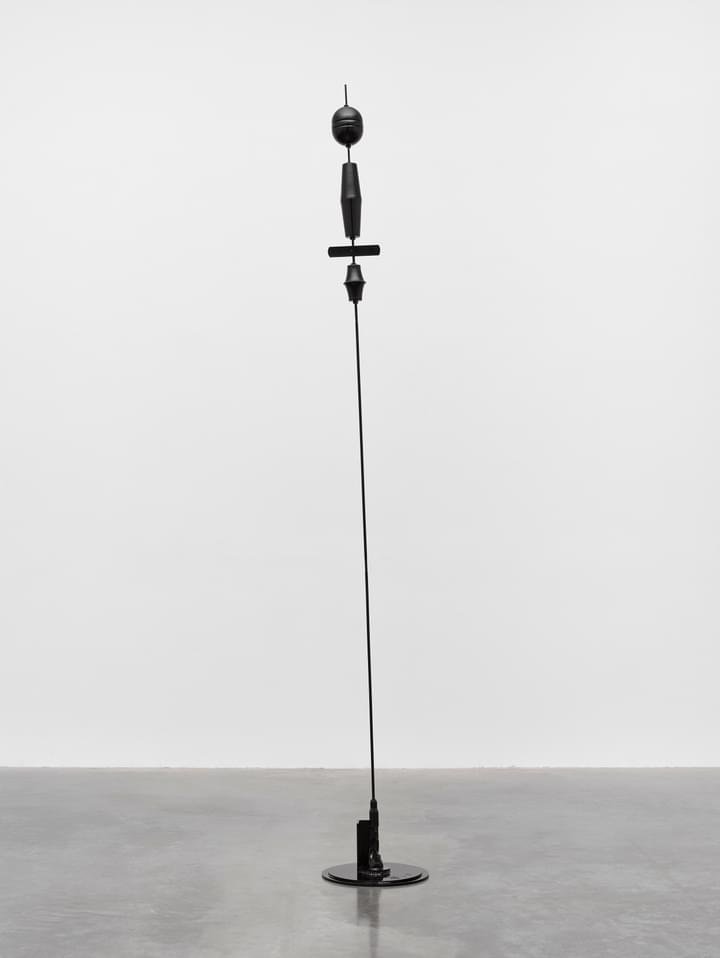Born Panagiotis Vassilakis in Athens, Takis (1925–2019) spent more than seventy years expanding the purview of art and taking it into domains previously belonging to experimental physicists. A leading figure in the kinetic art movement of the 1960s, he made sculptures, paintings, performances and sound works incorporating invisible forces as a fourth dimension − especially magnetics, his lifelong subject of study.
Among his many works involving electromechanical devices, often salvaged from army surplus stores, are the ‘Signals’ series, antenna-like sculptures topped with metal shapes or flashing lights that sway in response to the slightest vibrations. Takis also created reliefs, paintings and self-performing sculptures that use magnets to animate metallic objects suspended near their surfaces. While another series, titled ‘Musicals’, are automated instruments employing electromagnets and electric guitar pickups to create reverberant sounds the artist called ‘raw music’.
Takis was an autodidact and self-professed ‘instinctive scholar’, but his accomplishments led to an invitation to serve as a researcher at the Massachusetts Institute of Technology in 1968. He drew on technological discoveries, ancient philosophy and Zen Buddhism to develop unique and oftentimes mystical forms embodying time, space and energy.
Active in Paris, London, New York and his native Greece, Takis met the Beat poets, The Beatles, and Marcel Duchamp, the latter of whom dubbed him ‘the ploughman of magnetic fields and signalman on soft railroads’. During his career Takis channelled aspects of his research into social spheres, regarding his discoveries as forces for peace and healing. In 1960, he launched his own version of the Cold War space race, using magnets to suspend the poet Sinclair Beiles mid-air, the climax of a public event at which the poet read Takis’ anti-war ‘Magnetic Manifesto’, ahead of Yuri Gagarin’s historic flight a year later. Also in 1969, he co-founded the Art Workers Coalition in New York, pushing for more artist’s rights and diversity in museums. Until his death, the artist headed the Takis K.E.T.E., founded in 1986, a research centre for the arts and sciences in Athens that advanced his research and its practical applications for improving the quality and length of life. He also practiced Solar Yoga, a form of his own invention focused on drawing energy from the sun.
Since the 1960s, Takis has participated in numerous international exhibitions, including Documenta in Kassel, Germany (1977 and 2017); the Venice Biennale (1995); and the Paris Biennale, where he was awarded first prize 1985. More recently, his work was featured in important solo exhibitions at Stavros Niarchos Foundation Cultural Centre (SNFCC), Kallithea, Greece (2021); MACBA Museu d’Art Contemporani de Barcelona (2019); Tate Modern, London (2019); Palais de Tokyo, Paris (2015); and the Menil Collection, Houston (2015).
Among the museums holding his works are the Centre Pompidou, Paris; MoMA and Guggenheim Museum, New York; the Menil Collection, Houston; Tate, London; and Peggy Guggenheim Collection, Venice. In 1987 Takis completed Foret Lumineuse (Luminous Forest), a multi-part installation of ‘Signals’ in the Esplanade de La Défense, Paris and the city’s biggest public art commission.


